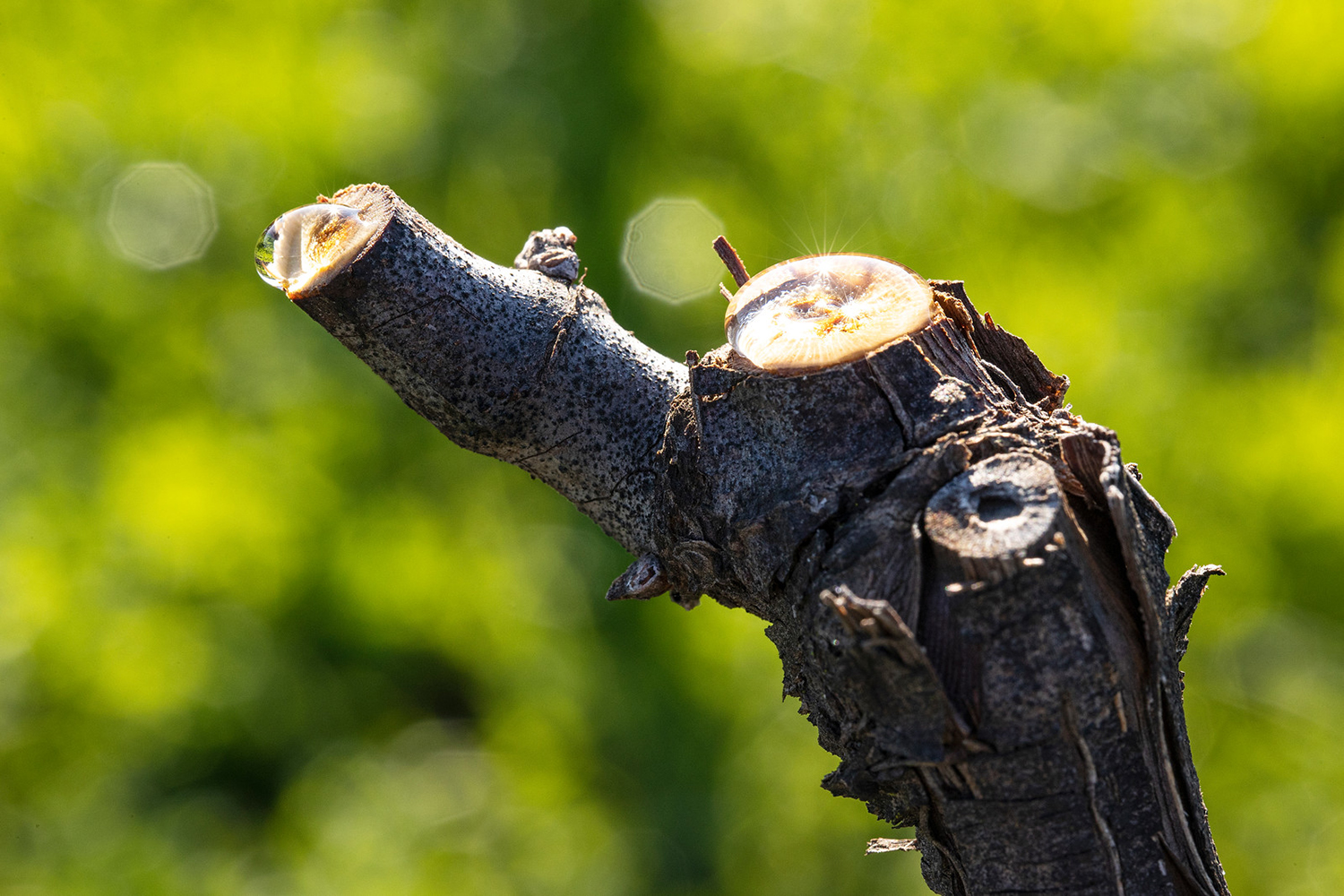Every year, as temperatures rise towards the end of winter and the beginning of spring, an interesting process occurs in the vineyard, called “grapevine bleeding.” This natural phenomenon is not well-known outside the world of viticulture, but it is an important step in the vine lifecycle which signifies the end of dormancy.

Grapevine bleeding occurs after winter pruning, when last year’s growth is removed to prepare for the growing season ahead. As the soil temperatures rise, root growth and sap flow begin once again. The vine’s metabolism is reactivated as it draws water up through the stem until it reaches the canes and presses against the fresh prune cuts.
Sap oozes or “bleeds” from the freshly cut surfaces, dripping clear liquid or “tears” for up to two weeks. Eventually, the liquid turns into a gelatinous substance produced by bacteria, sap, and minerals that forms calluses over the cuttings. The substance “heals” the cuts and helps regulate bud break and the early vine growth.

Whether the expression “bleeding” is appropriate is questionable, as this is not a negative process for the vine much like the name implies. Rather, “bleeding” indicates that the plant is growing, up-taking water and nutrients, and that bud-break is on the horizon, marking the onset of the 2022 growing season.














